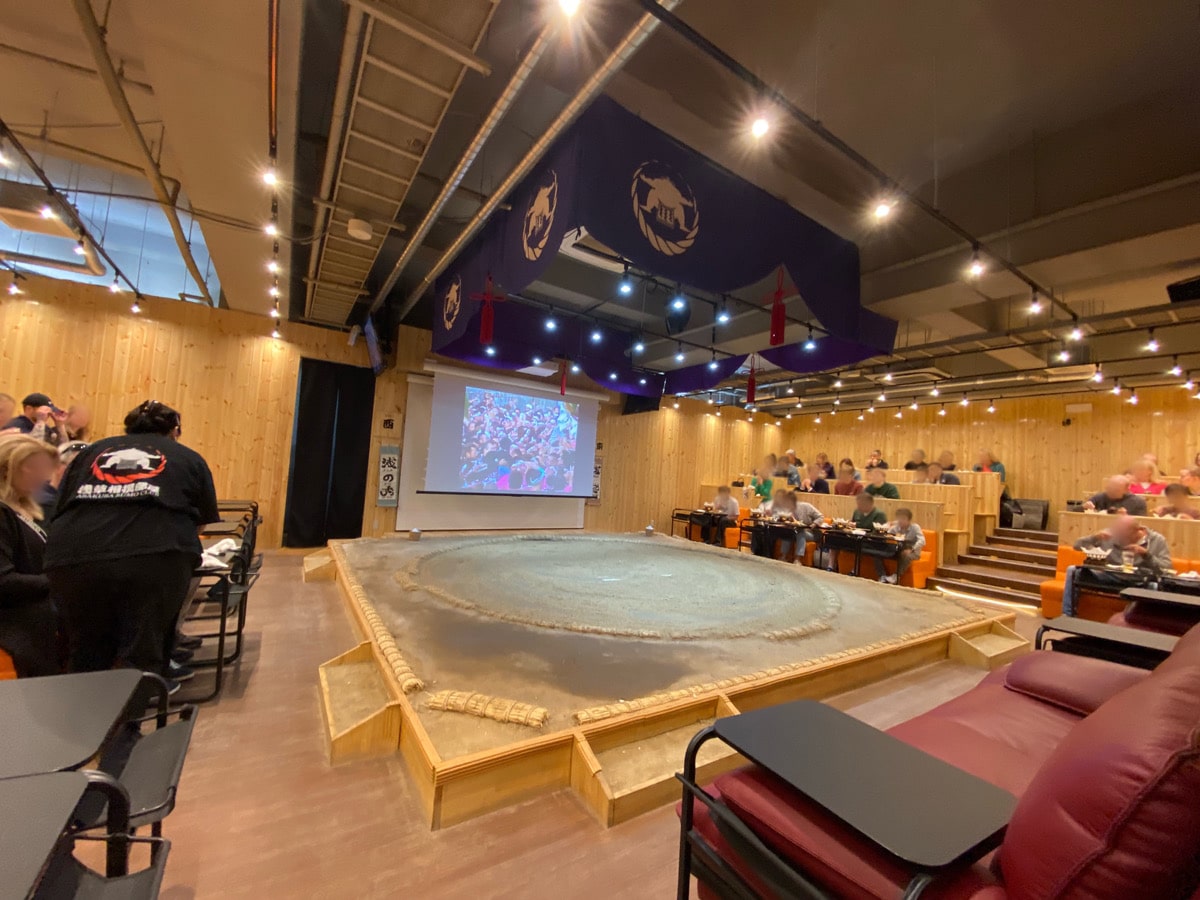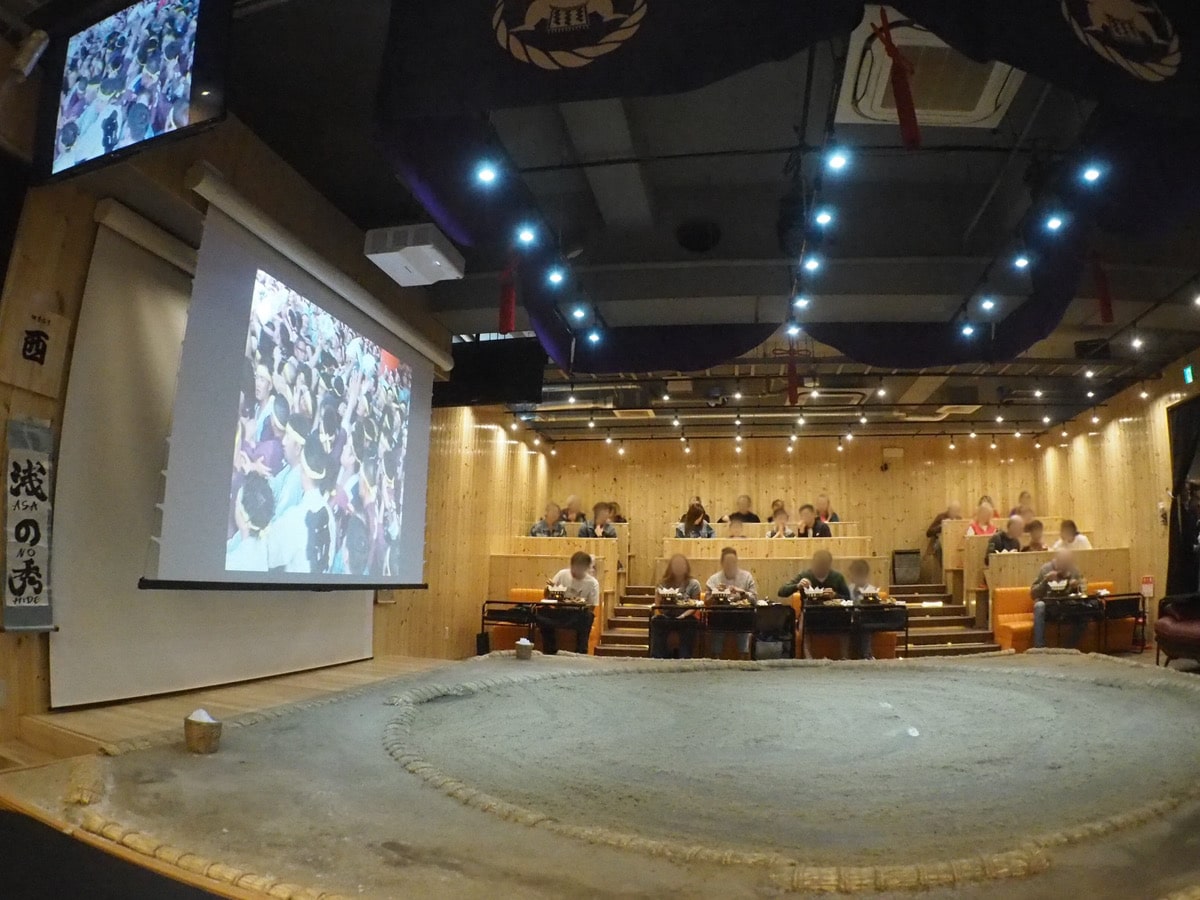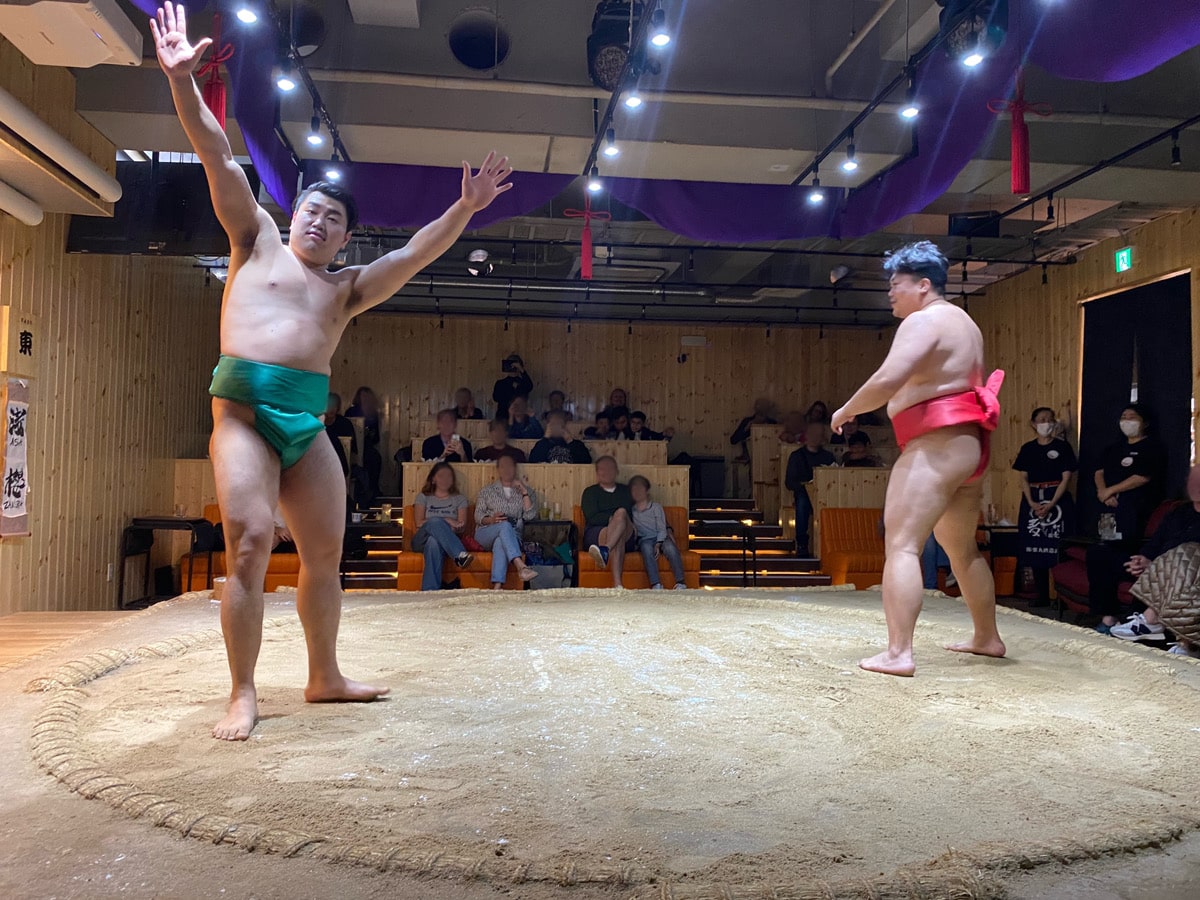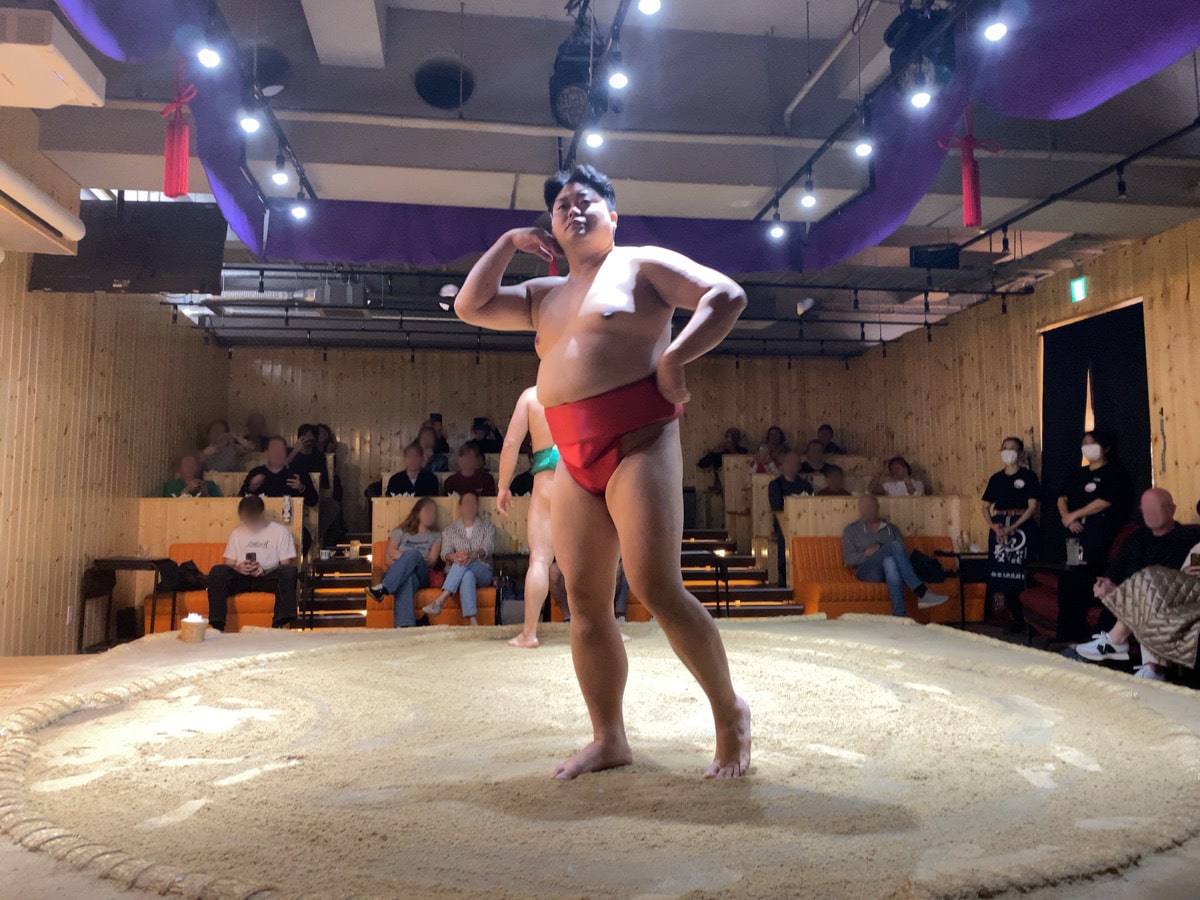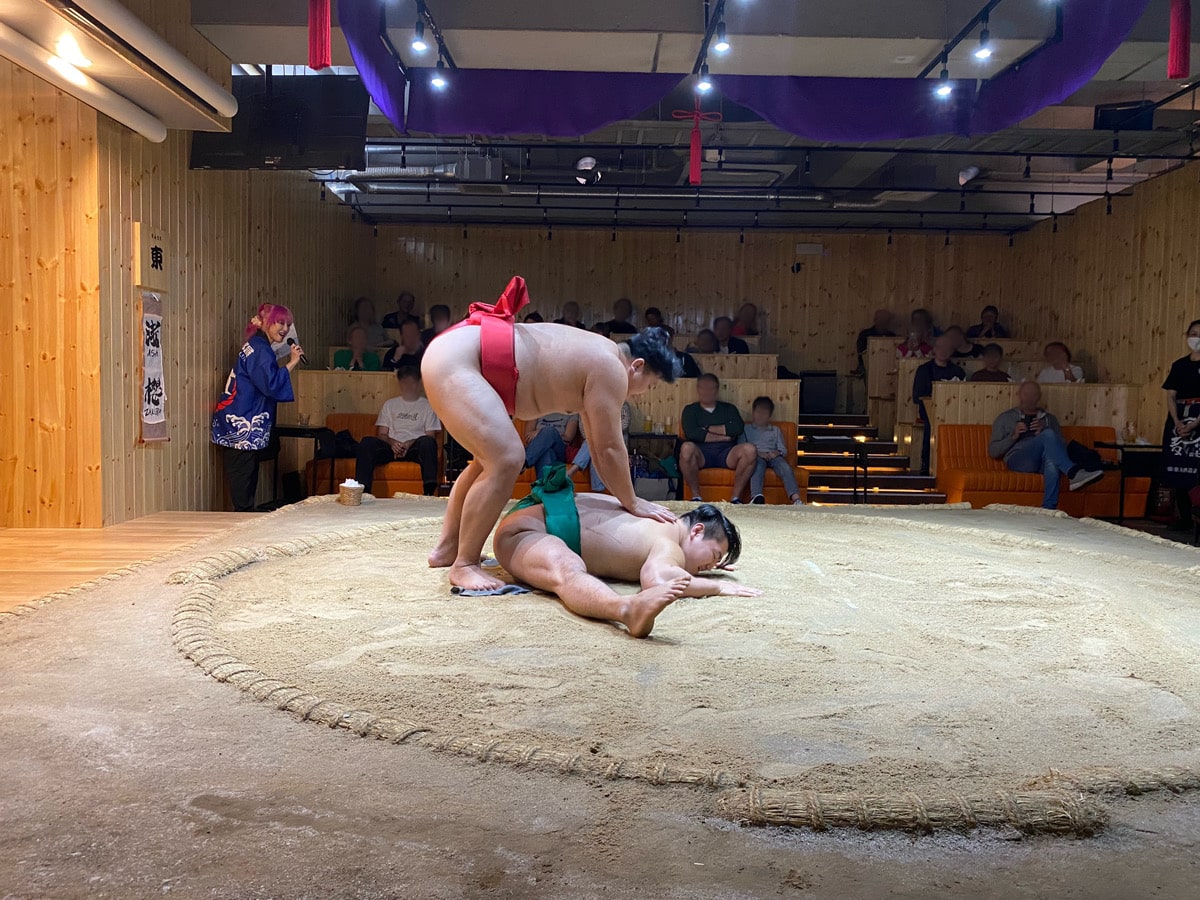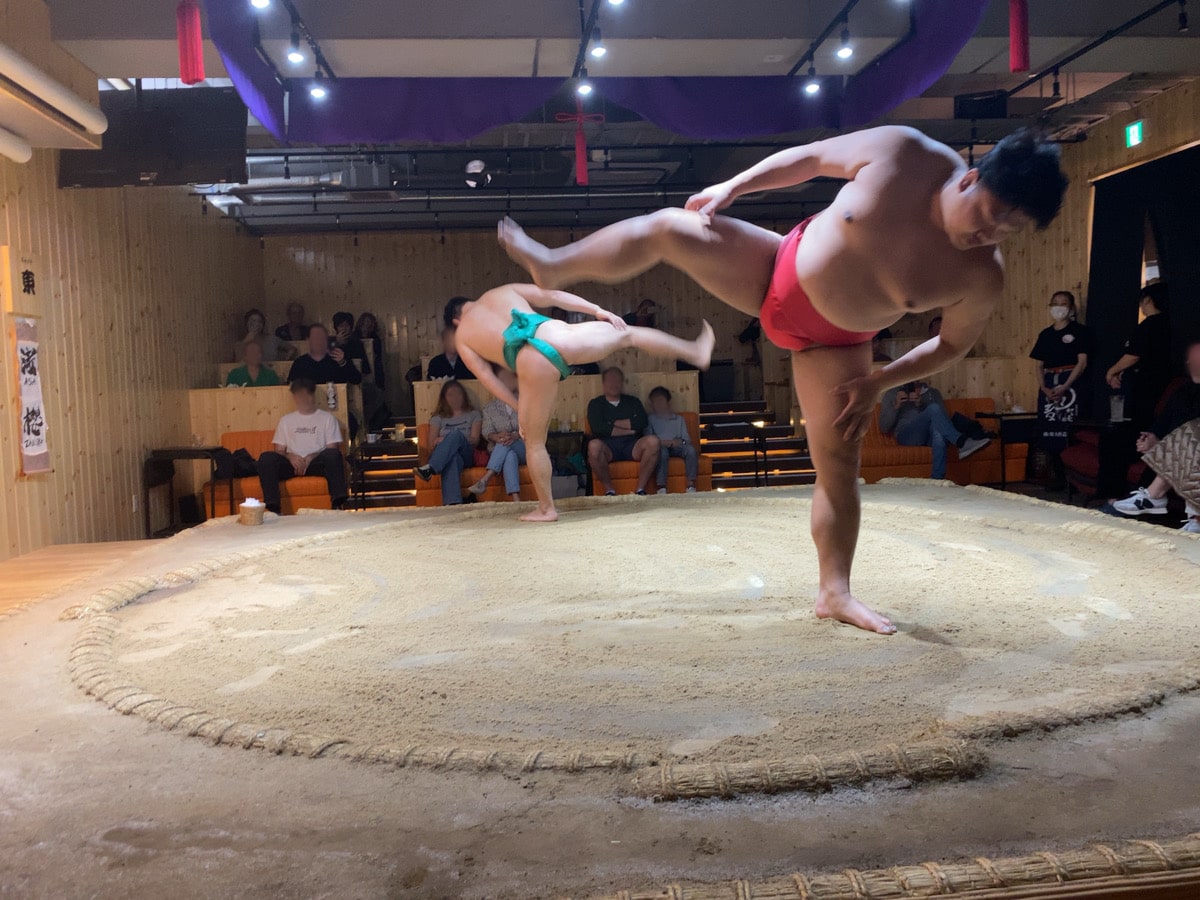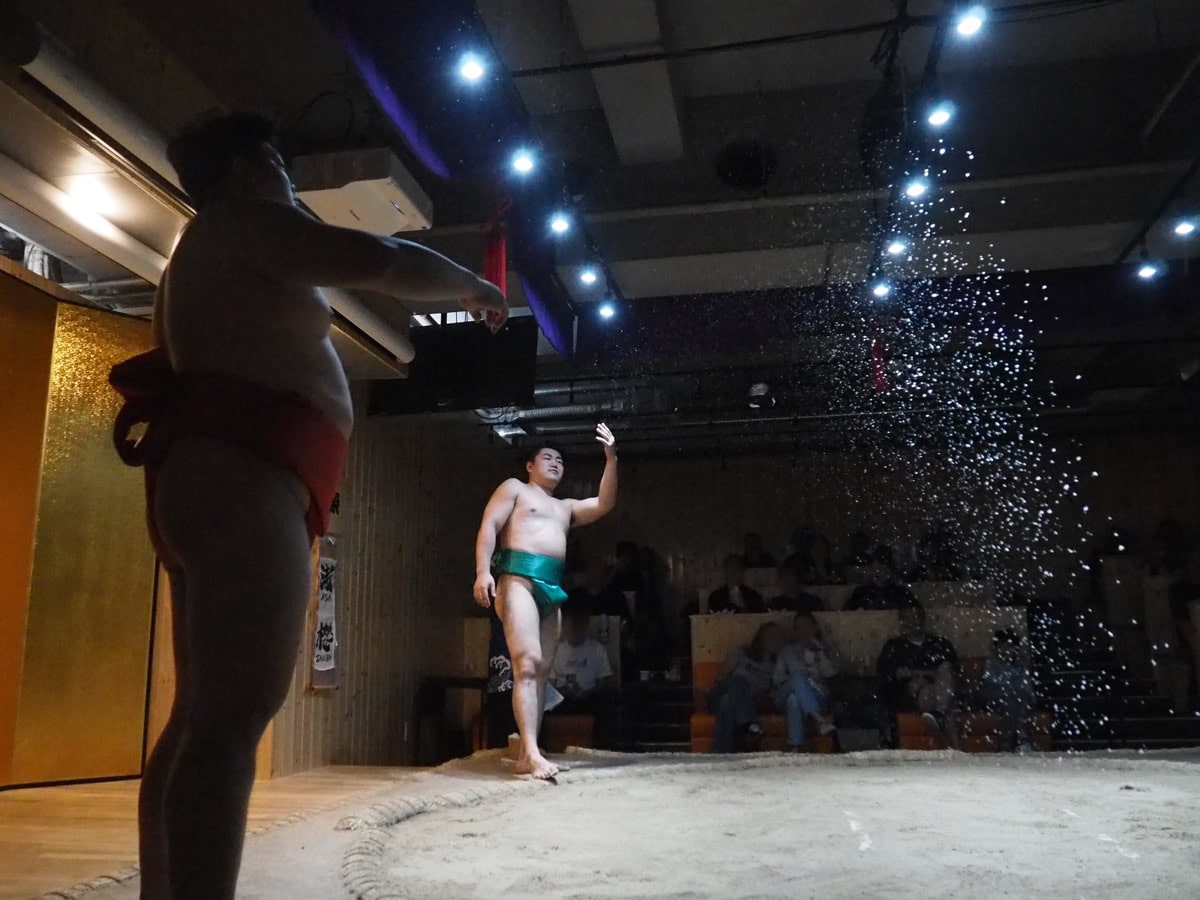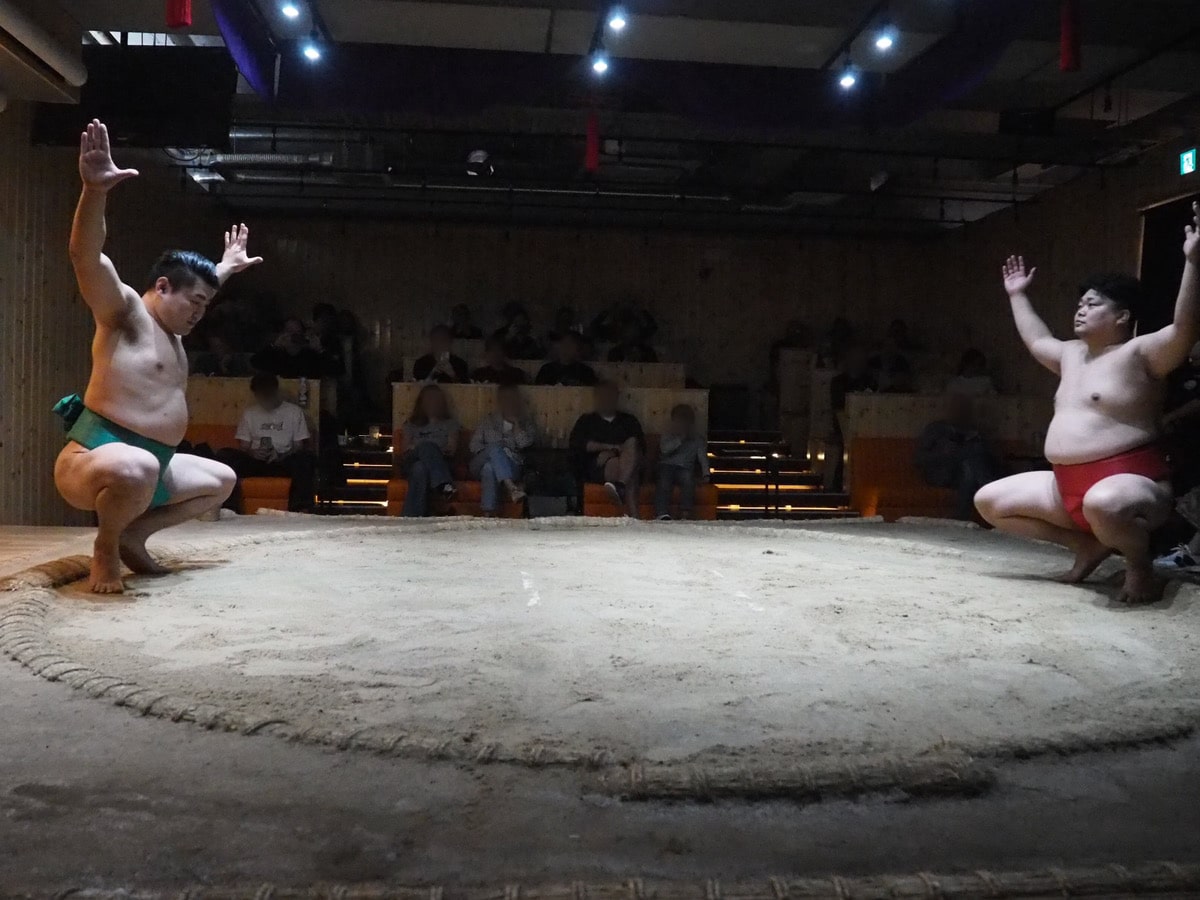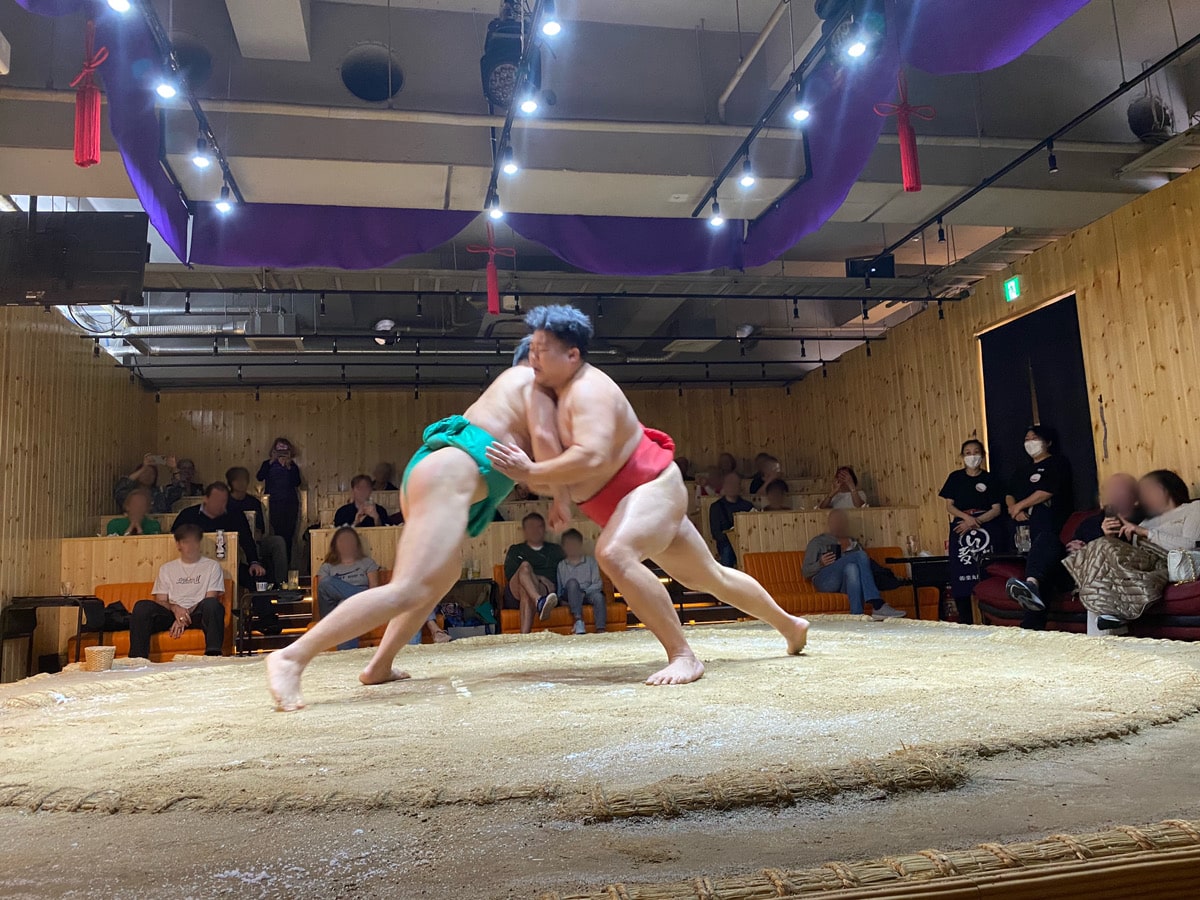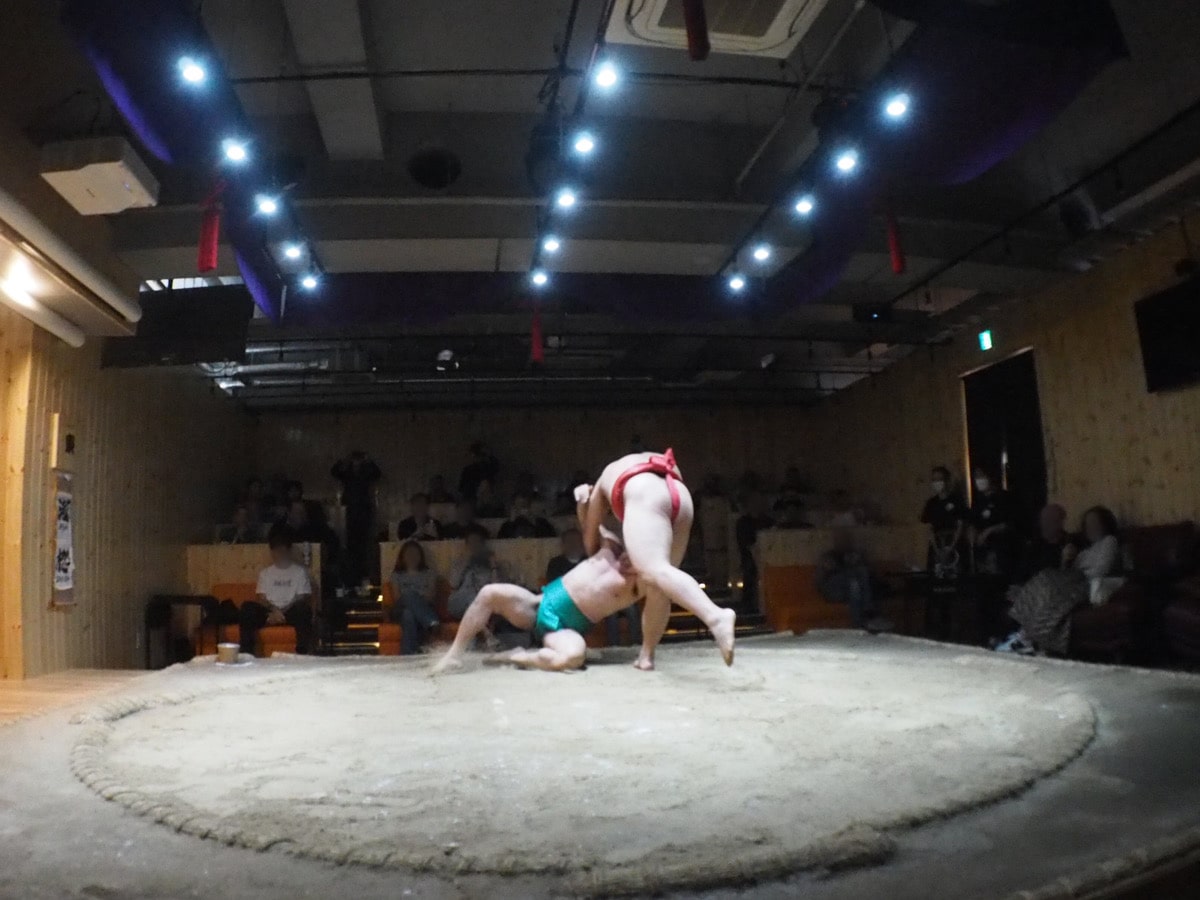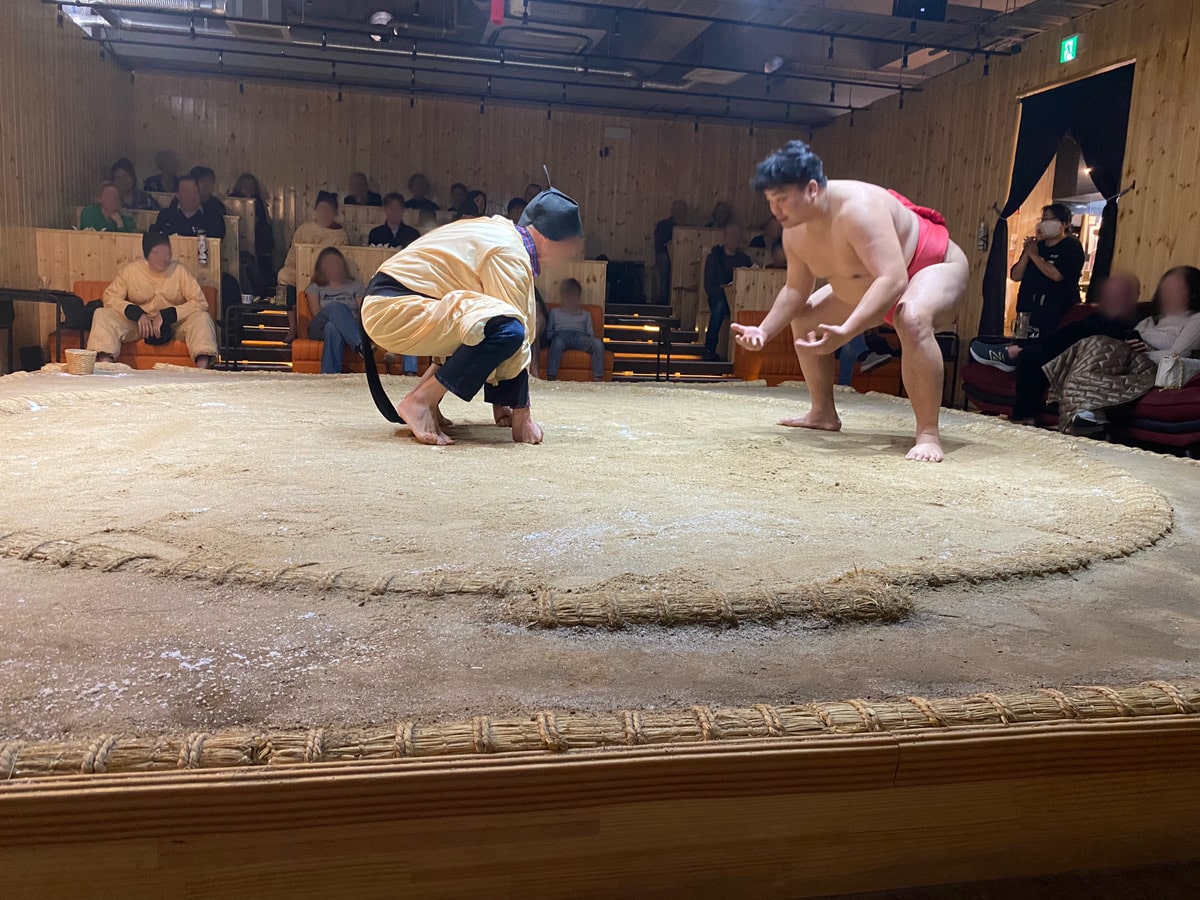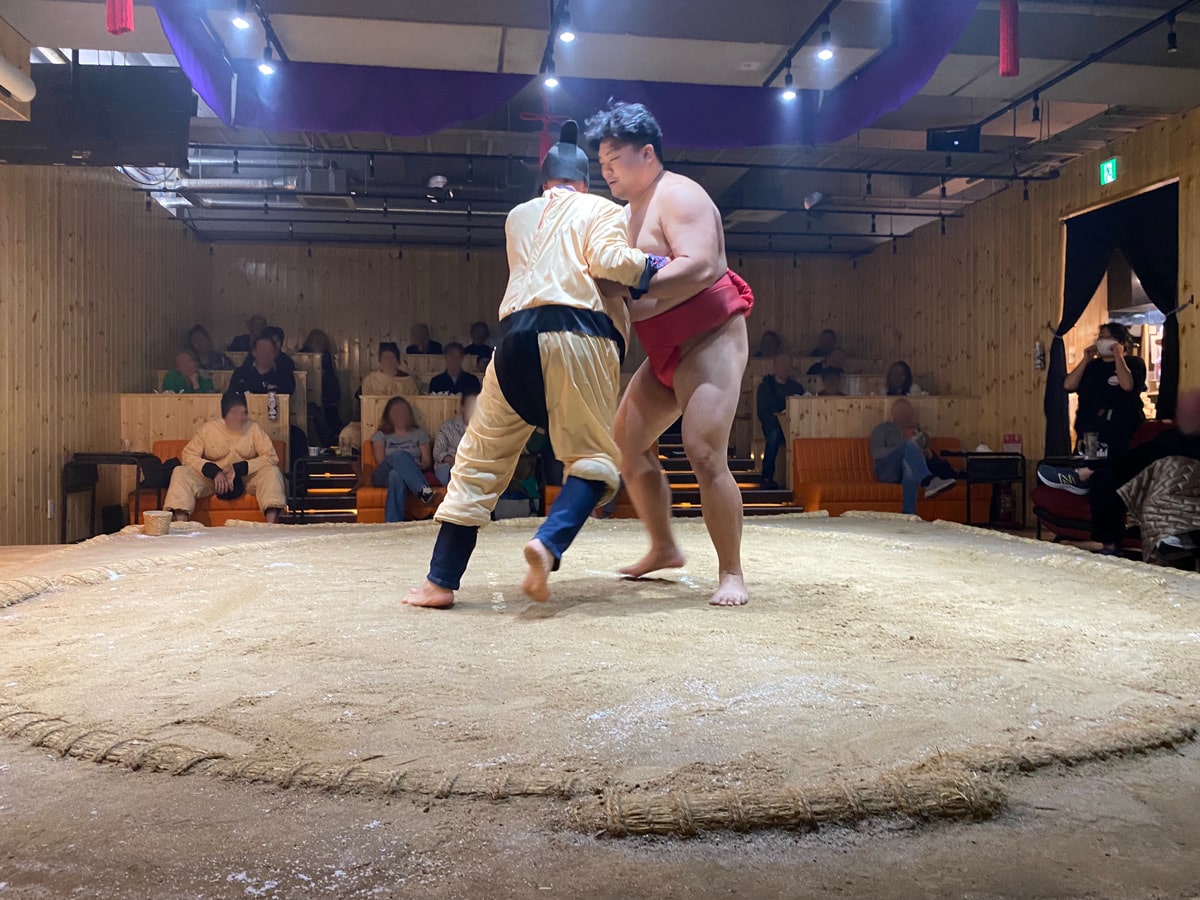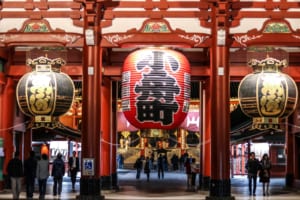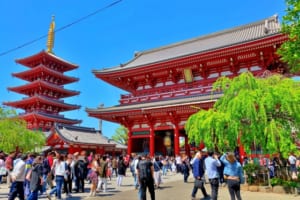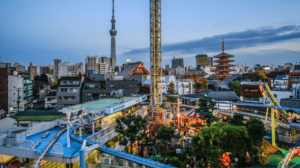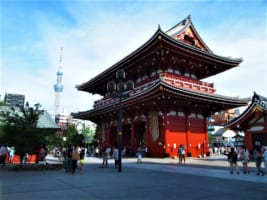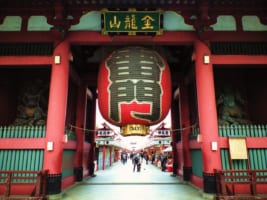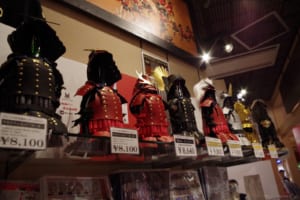Asakusa Sumo Club: Experience Sumo Up Close while Enjoying a Traditional Meal
Experience Sumo with all your senses in Asakusa

Sumo, Japan’s national sport, captivates not just locals but also scores of international visitors who dream of witnessing its thrilling matches.
For those eager to delve deeper into this ancient sport, the Asakusa Sumo Club offers a novel and immersive way to connect with sumo culture. During a recent visit, I had the opportunity to experience sumo up close while enjoying traditional Japanese cuisine.
In this article, I’ll share the highlights of my visit, illustrating how the Asakusa Sumo Club blends cultural insight with culinary delight.
*Please note that this article contains affiliate links by Rakuten Travel Experiences.
What is Asakusa Sumo Club?
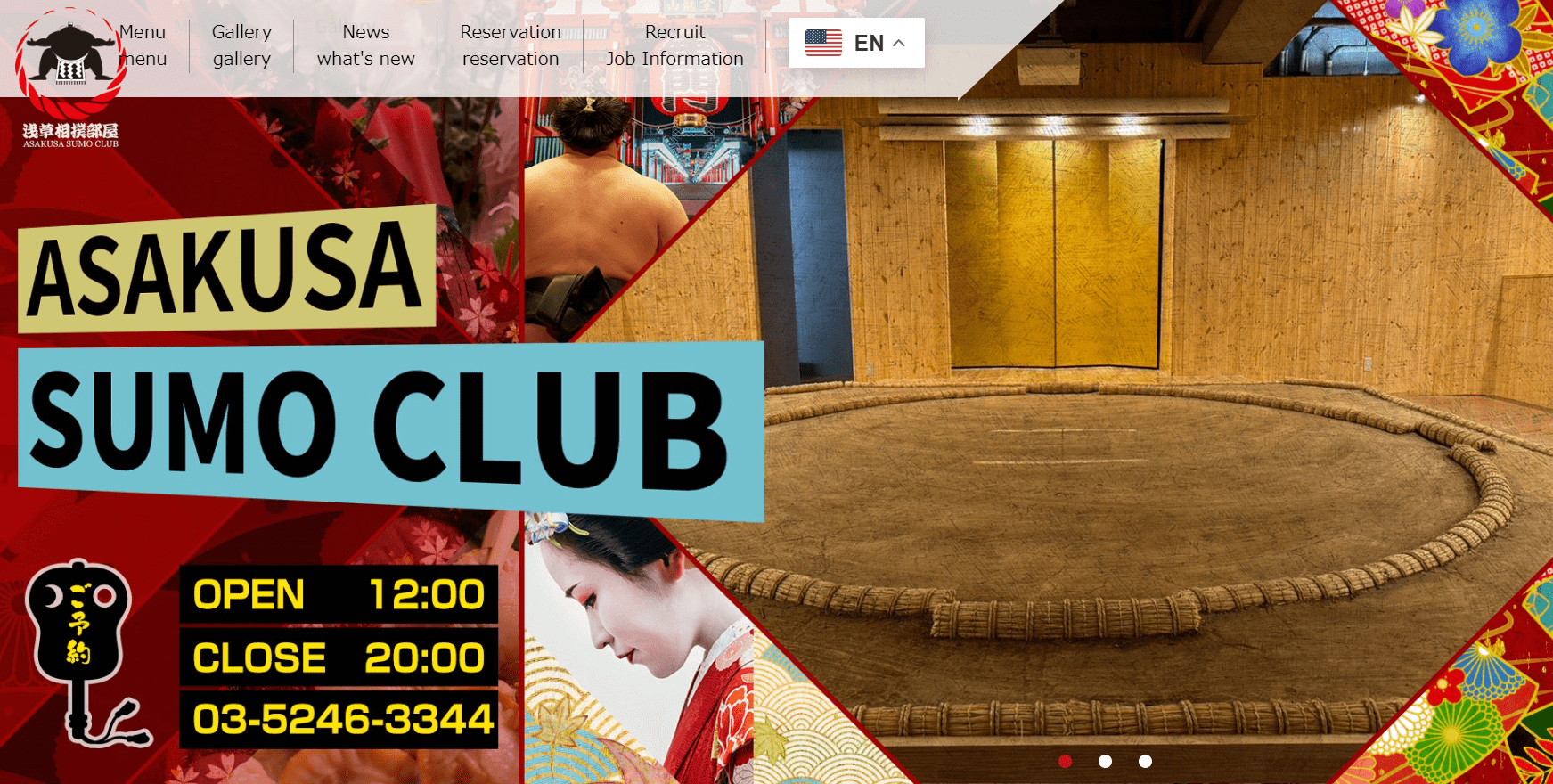
Asakusa Sumo Club (浅草相撲部屋) in Tokyo is a unique destination for visitors interested in experiencing Japan’s rich culture and traditions. This innovative venue provides a delightful opportunity to engage with the ancient sport of sumo wrestling without the challenges of attending a full-scale tournament or visiting a traditional training stable.
The environment can be pretty restrictive at traditional sumo stables, with strict rules prohibiting casual conversation, eating, drinking, and video recording. This can be daunting for foreign visitors. In contrast, Asakusa Sumo Club offers a more accessible and enjoyable sumo experience.
Guests can savor a delicious “chanko-nabe” meal, a hearty stew closely associated with sumo wrestlers, in a comfortable seating area overlooking a real sumo ring.
The venue features sumo shows with former professional and student wrestlers. Guests have the unique opportunity to wear sumo costumes and participate in friendly matches against ex-wrestlers. Shows are available in both Japanese and English, making them accessible to a broad audience.
Asakusa Sumo Club is the perfect place to quickly and enjoyably immerse yourself in the captivating world of sumo.
<<Book Online: Tokyo Asakusa Sumo Club Sumo Event & Chanko-Nabe (Hot-pot)>>
My Experience at Asakusa Sumo Club
From here, I will share my experience of going to the Asakusa Sumo Club with you.
1. Arriving at the location
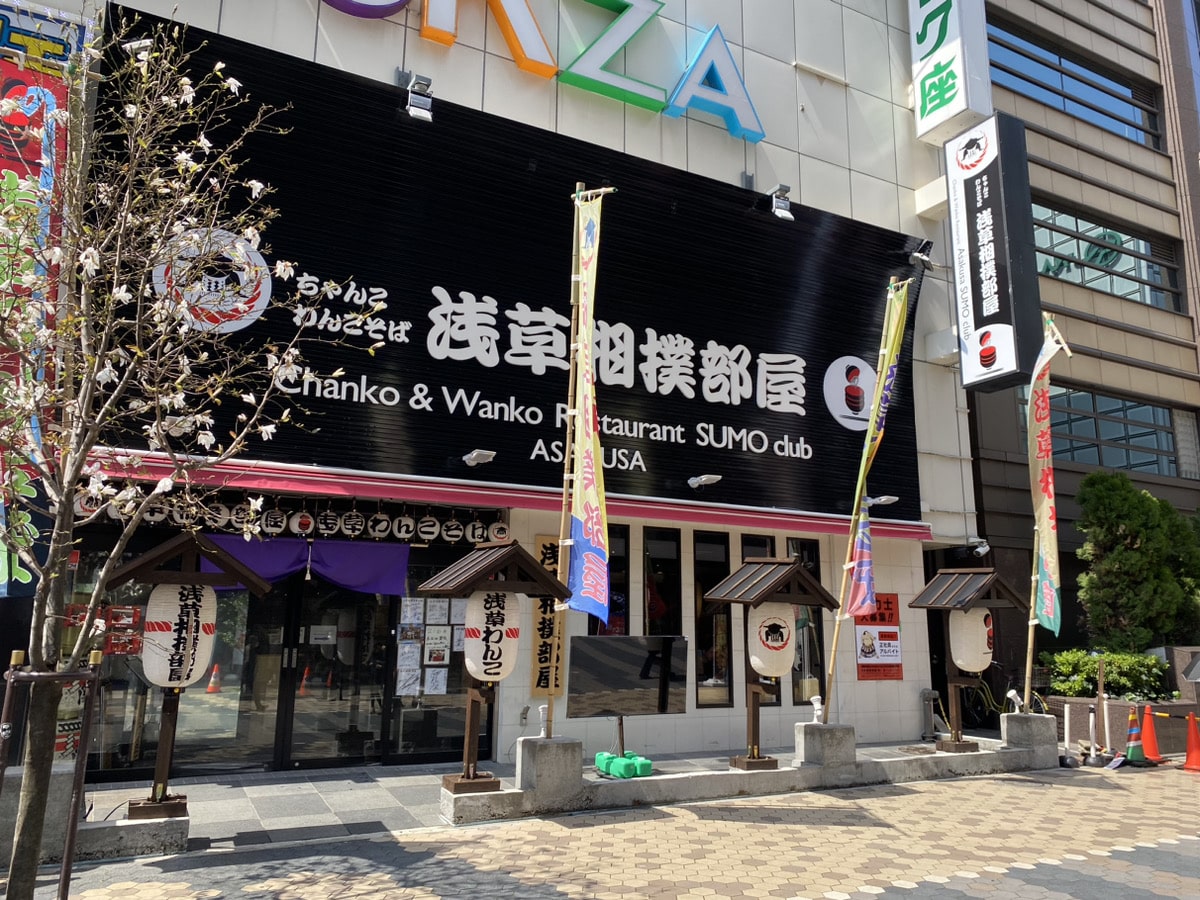
This Sumo-watching experience takes place at Asakusa Sumo Club (浅草相撲部屋), which is located in an easily accessible location.
You can reach the place from both Asakusa train stations (Metro station and Tsukuba Express station). If you’re heading from the Asakusa metro station (Asakusa Line, Ginza Line, Tobu Skytree Line, Tobu Railway Express), it takes about 8 minutes walking to get to the location. In the case you’re heading from the other Asakusa station (Tsukuba Express), it will only take you about 2 minutes to the place.
The place is easy to find: a large sign in front of the restaurant and colorful flags indicating the location (just like they do at the Ryogoku Kokugikan).
My reservation was at 12:00, so I got to the place about 5 minutes earlier. Once I got in and let the staff know my reservation, they guided me to my seat at the arena room.
My seat was in the front row, which was about 4 feet apart from the ring.
2. The Food

Once you’re seated, the restaurant provides a QR code to see the menu from your mobile phone (the restaurant also offers free wifi).
The ticket for this experience includes the meal when making the reservation (one free drink included). The original meal includes Chanko Nabe (Japanese stew), Inari sushi (rice tucked inside a sweet/salty deep-fried tofu pockets), Karaage (fried chicken), Edamame (soybeans), and a dessert.
The dishes served in this meal are all related to Sumo (the show’s host explains this later).
The main dish, Chanko Nabe, is a traditional Japanese hot pot dish closely associated with sumo wrestlers. These wrestlers rely on it as a staple meal to gain strength and bulk. This restaurant’s Chanko Nabe combines a rich broth made from chicken, bonito, kelp, and shiitake mushrooms. The chef carefully selects every ingredient for authenticity.
Karaage (fried chicken) also holds a special significance in the sumo wrestling community. Sumo wrestlers prefer chicken over other meats due to a unique superstition tied to their sport.
Inari sushi is regarded as a food that brings good luck due to its connection with the foxes (messengers of the Inari god) at Inari shrines.
*Learn more about these foods at the tour!
You can also order additional dishes and drinks (additional orders are charged). On the menu, you will find a wide variety of drinks (soft drinks and alcoholic beverages).
Since the base meal is decided from the beginning, it is served just a few minutes after you arrive. Everything was delicious.
3. Initial explanation & Dance performance
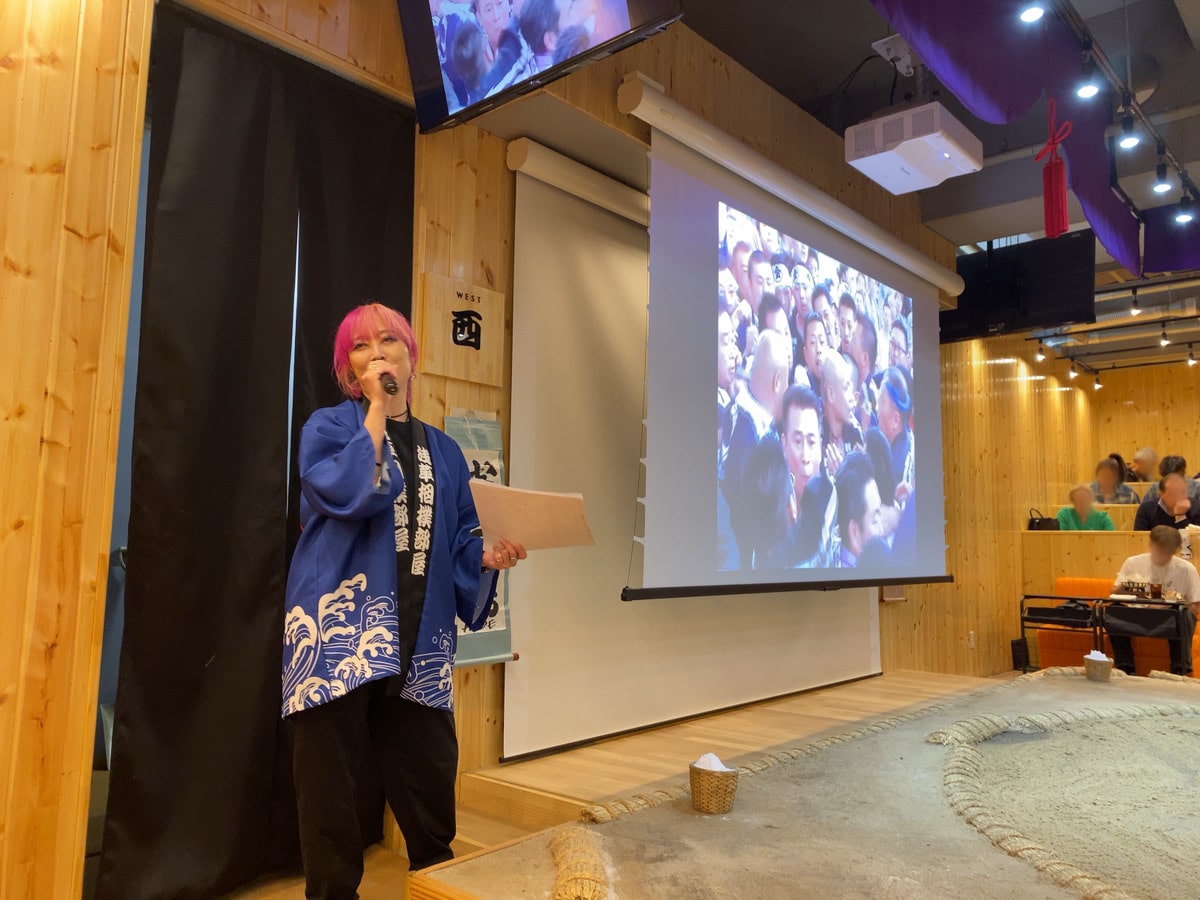
About 15 minutes after my meal arrived, the show’s host came out to greet the guests.
After the host introduced herself, she explained the restaurant’s concept and the itinerary for this experience. Then, she proceeded to explain the meal. She explained each dish, what it is, and how it relates to Sumo wrestling.
As the host explained, she was funny and energetic and interacted with the guests, ensuring everyone was well-engaged and having a good time. She was fluent in English.
After the explanation, there was a traditional dance performance.
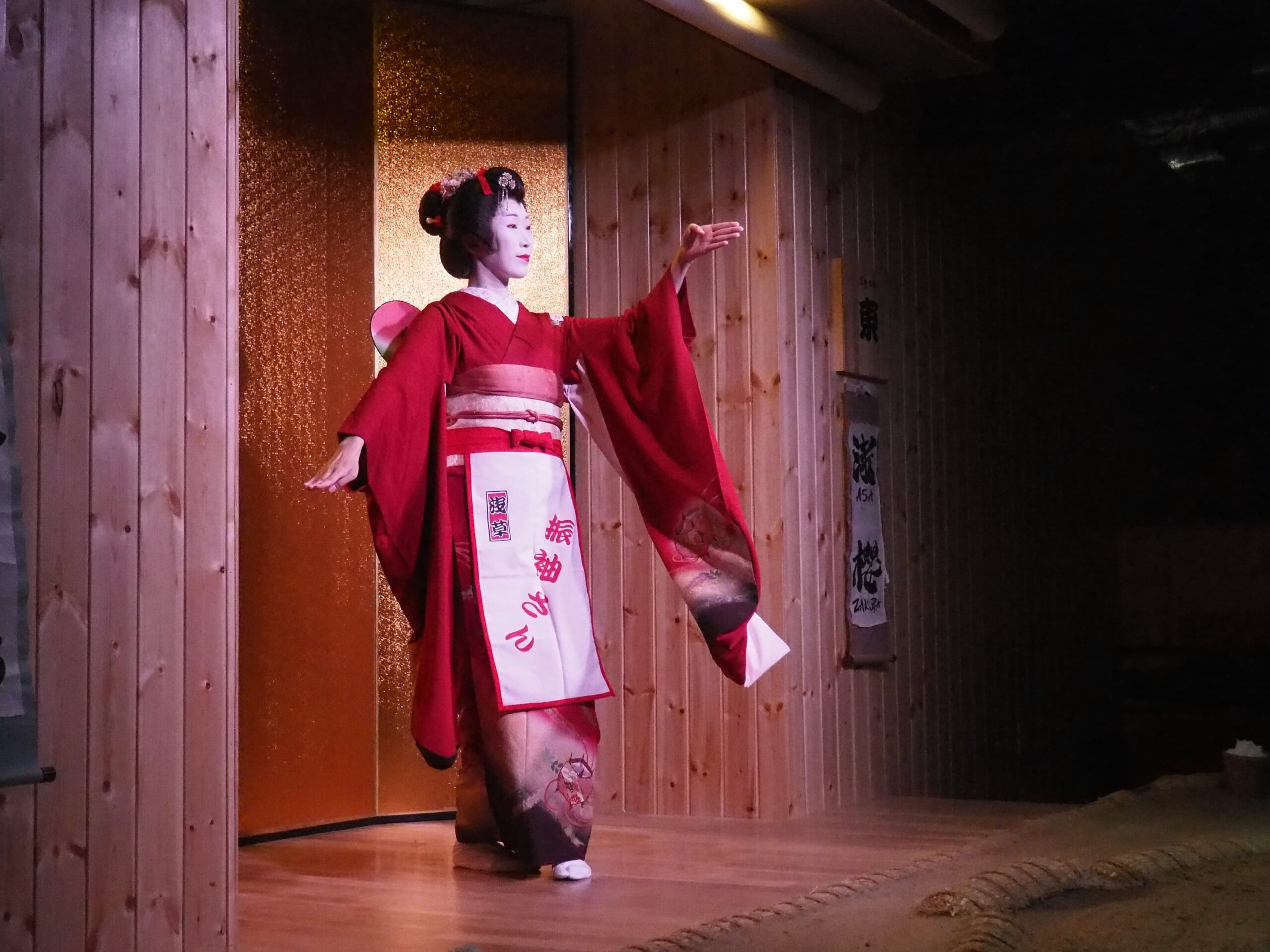
The dance performer (Tsubaki-san) took a few minutes to take photos with the guests afterward.
3. Sumo Demonstration
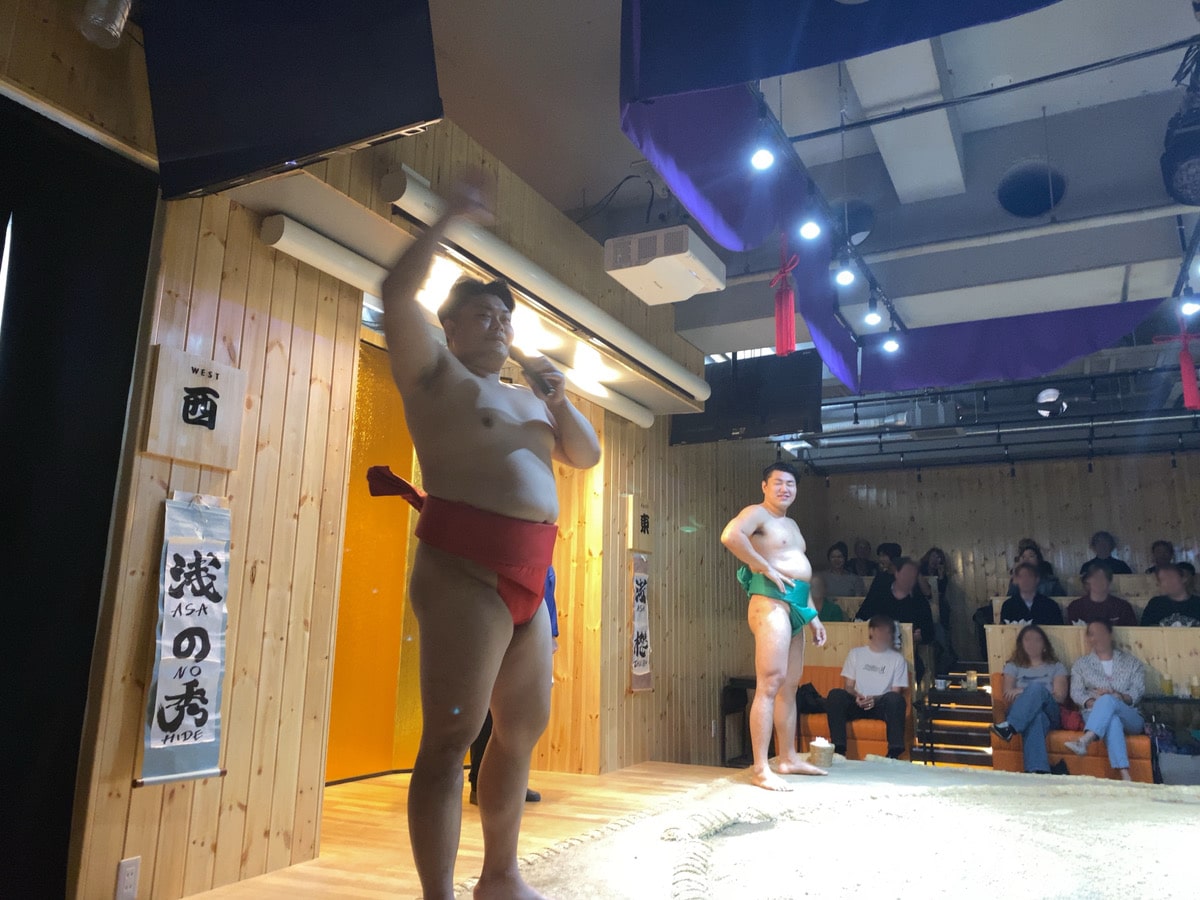
After the dance (around 12:40), the two Sumo wrestlers who would do the demonstration came out. The two Sumo wrestlers were “Asazakura” (in green) and “Asanohide” (in red).
Both introduced themselves while interacting with the guests. Both spoke a little English, but most of the show was explained by the host, so there was no problem.
As you can see from the photos above, both Sumo wrestlers were charismatic and funny at times. There was a lot of laughter in the room throughout the show, which is an experience you usually can’t have at a regular sumo training tour.
Then they proceeded to demonstrate their stretching routine as well as some of the traditional moves.
They also took the time to explain the basic rules of Sumo and demonstrated the illegal moves during a match.
After this, came the time everyone was waiting for. The lights dimmed down, leaving a spotlight illuminating the ring. From here, both wrestlers proceeded to demonstrate a traditional Sumo match.
As both wrestlers proceeded with the ceremony before the match, the show host explained what they were doing as well as the meaning behind each movement.
Usually, Sumo matches are decided in a single match, but in this case, the first to win twice was the winner.
Although the matches were controlled (the wrestlers knew what they were doing), you could feel the intensity of the wrestlers during the matches. Especially being in the front row, I was a little worried that maybe one of them would fall on me. But that never happened. The match demonstration was really exciting to watch!
4. Sumo Challenge
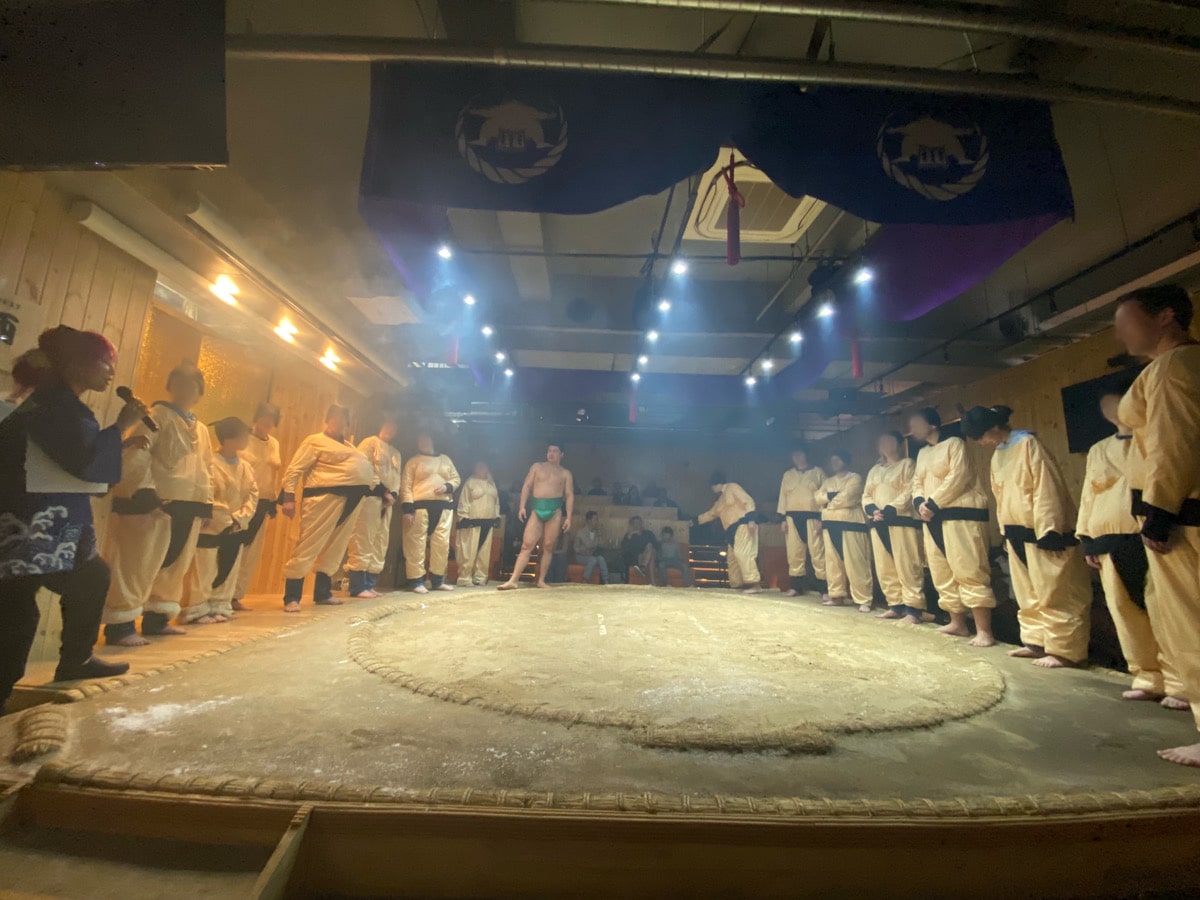
After the Sumo match demonstration from both wrestlers, guests were able to participate in the “Sumo challenge” where they could actually match against one of the two wrestlers.
Guests who were up for the challenge were given a Sumo suit, and each one had the opportunity to choose with whom they wanted to match up.
While the challengers were changing into their suits, the wrestlers took time to answer questions from the crowd.
The challenge was fun to watch. The wrestlers were funny as they faced each challenger. After each match, they took a photo with the challengers.
After this, the show’s host announced the end of the show. People could stay longer to take more pictures with the wrestlers, or they could leave.
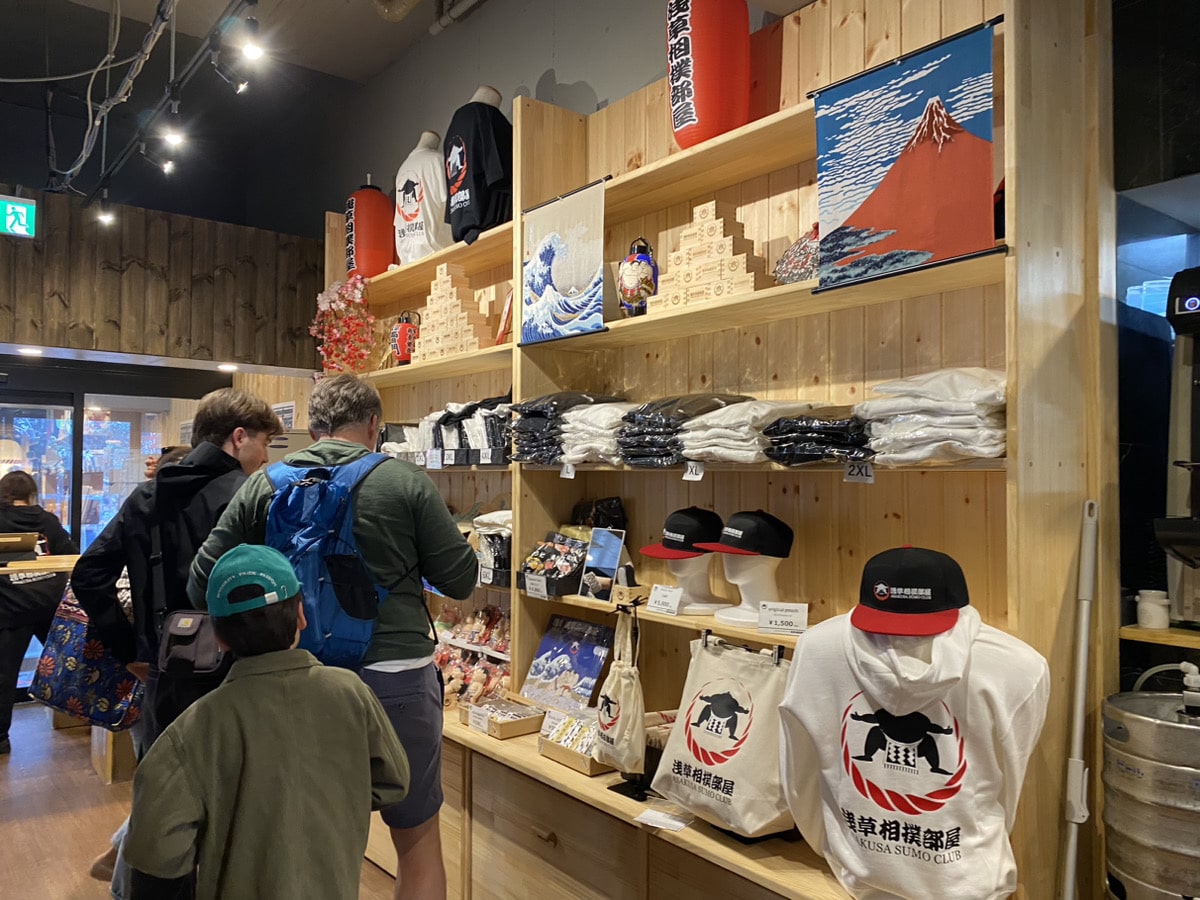
Ultimately, they gave me a souvenir tote bag with various goods inside.
On our way out, we passed by the restaurant’s souvenir corner, where customers can purchase extras (e.g., T-shirts, towels).
My thoughts
Asakusa Sumo Club is a fun experience where you can learn about Sumo in various ways. Not only will you listen to the explanations in English, but also get to see up close a demonstration, get to eat the traditional meal, and even get the opportunity to match against a Sumo wrestler.
This unique approach taken by the Asakusa Sumo Club for visitors to get in touch with the Sumu culture in Japan makes it really worth considering for your next visit to Tokyo.
As I previously mentioned, there are other ways to watch Sumo, such as going to a Sumo tournament or taking a Sumo practice tour. However, your visit to Tokyo might not coincide with the Sumo tournament season. Sumo practice tours take place early in the morning, and you need to keep quiet so as not to disrupt the wrestlers’ concentration. On the other hand, here, you get to interact, ask questions, and even match against the wrestlers, which you can’t do elsewhere.
So, I think this third option will allow more international visitors to connect with Sumo culture.
The environment is always cheerful, and the whole show is exciting and full of laughter. As I mentioned, the show host and the wrestlers are charismatic and will make sure you have a great time.
This is without a doubt a great experience for those who want to learn about Sumo.
For booking and more information about this experience, check out the following link!
<<Book Online: Tokyo Asakusa Sumo Club Sumo Event & Chanko-Nabe (Hot-pot)>>
How to get to Asakusa Sumo Club?
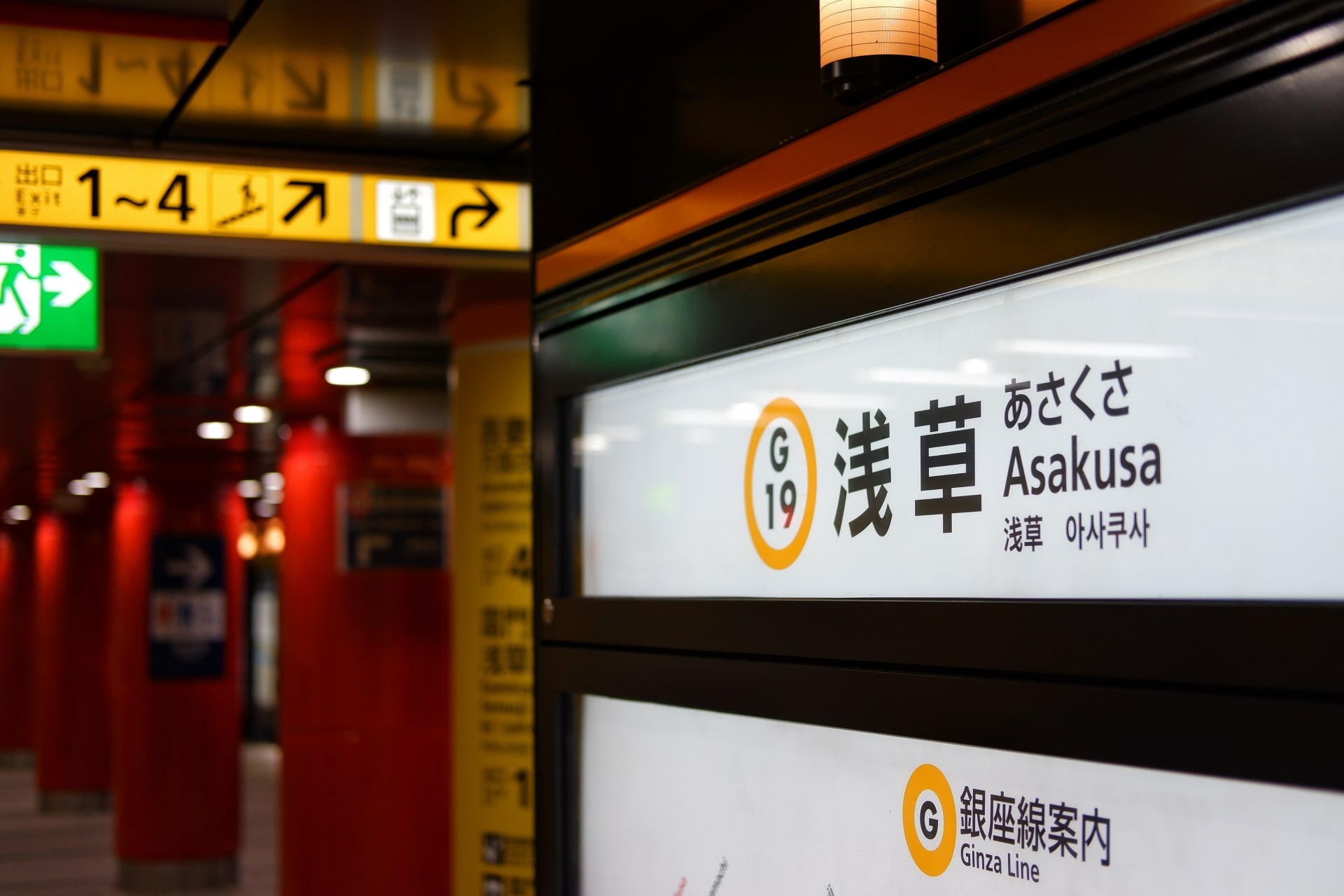
As I previously mentioned, the Asakusa Sumo Club is located just 2 minutes away from the Tsukuba Express Asakusa station or 8 minutes from the Asakusa Metro station.
In the case you’re heading from the Tsukuba Express Asakusa station, make sure to get out from A1 Exit.
If you’re heading from the Asakusa Metro station, the closest exits are Exit 3 and Ext 6.
-Asakusa Sumo Club-
Information
 Access Access |
2 minutes walk from Tsukuba Express Asakusa Station. 8 minutes from Asakusa Metro Station. |
|---|---|
 Business Hours Business Hours |
12:00~20:00 |
 Official Website Official Website |
https://asakusa-sumo.com/ |
I hope this article has been helpful to you. If you are interested in Sumo wrestling and Sumo culture in general, then this may be exactly what you’re looking for!
Or, if you’re looking for Sumo practice tours, check out the following options as well!
<<Book a Morning Sumo Practice Viewing Tour in Tokyo>>
<<Watch Morning Sumo Training (Guide Optional)>>
▽Subscribe to our free news magazine!▽
For more information about things to do in Asakusa and its surrounding area, check these articles below!
▽Related Articles▽
▼Editor’s Picks▼
Written by
Born and raised in Costa Rica, I started living in Tokyo from college. I love traveling within Japan & around the world. Since I wasn’t born in Japan, I know the cultural impact that you can get when visiting Japan for the first time and what you might be worried about before your trip. And I’ve lived long enough to somewhat understand the nuances of the Japanese culture that make this country such an attractive place to visit. Hopefully I can provide to you both the information you’re looking for and the information you didn’t know you needed to know.





